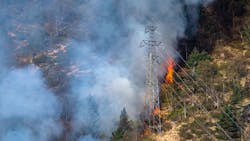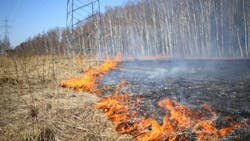Better Situational Awareness Drives Smarter Wildfire Mitigation
Your Electric System Operators, Emergency Managers, and field operations teams need support now more than ever. Wildfire mitigation strategies are generating an abundance of valuable data—historical records, real-time feeds, and forecast models. But who’s integrating that data for your teams? And more importantly, how can they act on it if it’s not tied directly to their assets?
Situational awareness is a cornerstone of any effective Wildfire Mitigation Plan. Whether your organization is understaffed or supported by in-house meteorologists and fire experts, you need a centralized, intelligent platform that makes wildfire and severe weather data usable and asset-specific. That’s where Indji Systems comes in.
For over two decades, Indji Systems has built Indji Watch with continuous input from utility operators and field personnel, ensuring it provides real-time monitoring and customized alerting for wildfire and weather threats. This solution supports both electric and high-pressure gas utilities across Australia and North America. From the earliest signs of a threat to post-event restoration, Indji Watch delivers actionable insights specific to your grid or gas infrastructure, helping crews respond faster and more confidently.
Whether you’re identifying high-risk assets, monitoring lightning and wind conditions, or communicating threat status during restoration, Indji Watch acts as a shared source of truth across your business units, enhancing coordination and response effectiveness.
The Weather–Wildfire Connection: A Dangerous Combination
Natural weather hazards on their own are a challenge. But when combined with wildfire activity, they can escalate rapidly. In densely populated areas like Southern California, we've seen how strong winds can fan flames and shift wildfire directions, creating fast-moving threats to new communities and infrastructure.
In 2017, for instance, high-pressure gas transmission teams in Colorado had to make immediate decisions when fast-moving wildfires, driven by erratic wind shifts, endangered critical pipelines. Lines were shut down to protect the public and support emergency agency efforts.
Weather plays a critical role in all phases of a fire’s life cycle. Dry vegetation, wind speed, and wind direction directly affect how fast a fire spreads and whether it will jump to new areas. Rain and humidity can help slow progression, giving fire crews an opportunity to build firebreaks and evacuate neighborhoods.
And when lightning is introduced into an already volatile fire zone, it increases the danger exponentially—not only to crews on the ground, but also through the potential ignition of new fires.
You Have the Data. But Can You Use It?
There’s no shortage of wildfire and weather data. From national meteorological agencies and satellites to fire management agencies and local sensor networks, utilities are inundated with raw information. NOAA’s GOES satellites update every 10 minutes. The HRRR forecast model refreshes hourly. But despite these powerful sources, few utility teams have the time or tools to make fast, informed decisions from it all.
The real challenge is not data availability—it’s data usability. When your team needs to act, they don’t need a dozen browser tabs open. They need one view that brings all relevant information together in the context of their own assets.
That’s exactly what Indji Watch offers: a unified platform that visualizes forecast, fire, and weather data from trusted sources in real time. Operators can focus on the most important task—protecting assets and people—rather than parsing through disconnected information.
An Integrated Solution Built for Utility Operations
Indji Watch Utilities Edition is purpose-built for utility teams working in fire-prone regions. It actively monitors fire dispatches, satellite hotspots, lightning strikes, and state/federal data sources to track fire movement and severity.
Alerts are triggered based on proximity thresholds defined by the customer. Indji Watch shows the fire’s size, containment, and exact distance from power lines, substations, or gas infrastructure. Automated alerts can be issued within five minutes of a fire being detected and update in real time as new data comes in from fire agencies or satellites.
Even before a fire reaches a critical point, Indji Watch layers in environmental forecasting—wind, lightning, humidity, and precipitation—so you can anticipate how the situation may evolve. The result is a clear operational picture for system operators and emergency managers alike.
From Awareness to Action: Real Results from the Field
Utilities that rely on Indji Watch are seeing real results: fewer surprise outages, faster responses, and better coordination across departments. Field teams know when to pull crews from danger zones, and operators know when to adjust loads or shut down lines to minimize risk.
The system enhances not only safety but also efficiency and resilience. When all departments are working from the same situational view, decision-making becomes faster and more effective—especially during critical events.
Conclusion: Turn Data Into Decisions with Indji Watch
Wildfires continue to be a growing threat to electric and gas utilities. While agencies and technologies are producing more data than ever before, the ability to turn that data into decisions remains the key challenge.
With Indji Watch, utilities gain a clear, reliable, and timely view of the hazards that matter most. From early warning to post-event restoration, it brings everything you need into a single, easy-to-use platform tailored to utility operations. By doing so, it helps you protect assets, reduce outages, enhance safety, and better manage your wildfire mitigation responsibilities.


